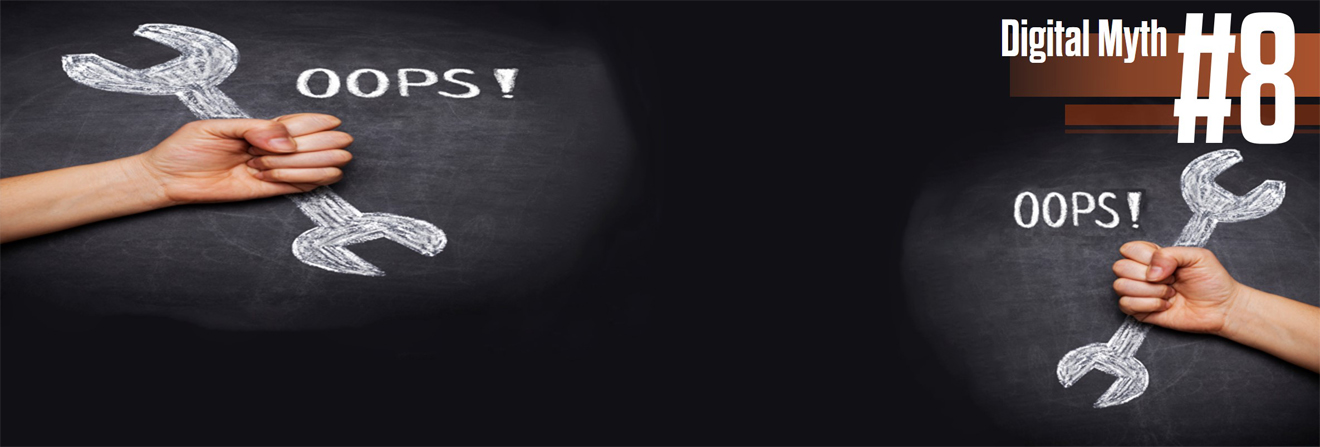Digital Myths: #8 – Disruption is not the new competition. Disruption is the new monopoly.
Disruption sounds painful: balances upset, trusted relations torn up, working systems broken apart, an outside force barging in, destroying something valuable, leaving a mess. A swarm of locusts can disrupt the harvest on a peaceful farm; a hurricane can disrupt a ship’s navigation at sea; a flu virus can disrupt the workforce of a company. It’s not a very nice word.
At a conference on digital issues hosted by the Italian EU presidency in 2014, there was a youth programme called ‘Young Europeans to Disrupt Our Future’. I thought that sounded like something to be avoided at all costs, as if my expectations for work and family in the coming years would be derailed by these crazy young Europeans whose only aim is to sabotage my plans. The Italian presidency ought to stop them! But no, because in technology, disruption is often seen as a good thing. If there is a working market, there is bound to be value in bringing down the existing structures. Instead of bringing new value by creating or improving something, disruption extracts value by breaking down existing structures – using technology either as a tool or as an excuse – and not caring to look back at what’s left behind. App taxi service Uber is one example. Rather than making investments in cars, drivers and infrastructure, Uber shifts the costs, risks and responsibilities to its suppliers. Instead of complying with rules on wheelchair-accessible vehicles, licensed drivers or authorized meters, Uber hides behind the veil of being just an ‘intermediary’ (I’m pretty sure I even heard somebody say ‘freedom of expression’, whatever that has to do with taxi services). Conveniently, Uber bypasses many or all of the rules that have been put into place over the years for reasons of security, tax, accessibility, liability, labour law and more by claiming to be an app. There are often signs by the baggage carousels in airports advising travellers to avoid unlicensed taxis, sometimes even using the word ‘offence’. Only, if you’re an ‘illegal’ taxi with an app, it’s not an offence, it’s disruption.
Disruption is a myth; behind the mask hides a monopolist.
There is no shortage of economic theory celebrating these values. Josef Schumpeter called it ‘creative destruction’, how markets must reinvent themselves, breaking some eggs to make the proverbial omelette. In more recent times, Clayton Christensen made a similar argument in The Innovator’s Dilemma, thinking about how big companies fail to reinvent themselves and being outrun by smaller, faster competitors. In fact, Christensen coined the word disruption. But the real architect is a Silicon Valley entrepreneur gone venture capitalist: Peter Thiel. He was a co-founder of online payment service PayPal and has since then evolved into the James Bond-villain type of eccentric investor that you wouldn’t think are for real. In The Unwinding, George Packer writes about over-the-top, decadent parties Thiel throws at his 900-square-metre villa with waiters and waitresses wearing nothing but aprons. Thiel has suggested building an island in international waters where internet companies can locate their servers outside any national jurisdiction. But most importantly, Peter Thiel designed the road map for Silicon Valley’s world domination. In the 1980s, Thiel was a student at Stanford (together with Google founders Larry Page and Sergey Brin, among others) and also the editor of the university newspaper, The Stanford Review. In one editorial, Thiel describes four principles for success: no tax, no government, no copyright, and no competition.
The idea that the Internet should be above the normal rules of society is not something that came from how the
technology developed; it was already in the design. The niche monopolies of Facebook, Amazon, Google, Facebook, eBay and others are not the result of better offers or smarter deals, there was a template. Calls for ‘copyright reform’ do not come from any clashes of new user habits and economic interests of the creators; it was always part of the plan. And it should come as no surprise that as an investor, Thiel has often described his strategy as looking for markets where monopolies are possible. Google was built on this template; disruption made its monopoly. Now look at sharing economy services: first AirBnB disrupts the accommodation market and Uber does the same to transportation, but fast forward and they become the new incumbents. Already these two are the biggest players in the world in their sector. If they continue to grow not only will they force out the smaller, local competitors but also advance into new sectors. No surprise, it was always in the plan. To accomplish a fair market place, competition and regulation are the basic tools. The new incumbents of the digital markets prefer to have neither. The main problem is not barriers to market entry or the loss of innovation, but what will happen when there is a de facto monopoly in a niche. As users, consumers and citizens, we will want for options.
Disruption is a myth; behind the mask hides a monopolist.
Digital Myths is a series of posts published from the book 21 Digital Myths, Reality Distortion Antidote where Netopia editor Per Strömbäck takes a closer look at some of the concepts that have shaped the way we think, talk and make decisions about digital technology and the internet.

